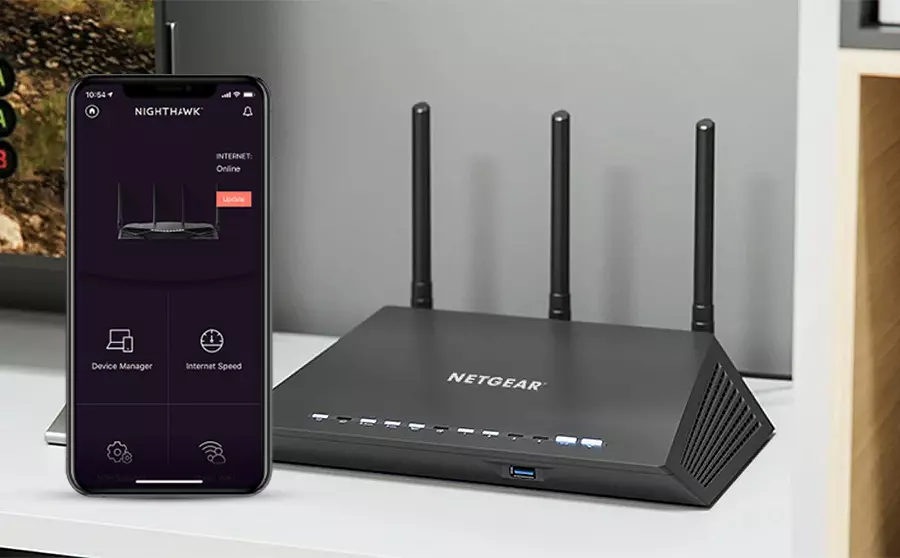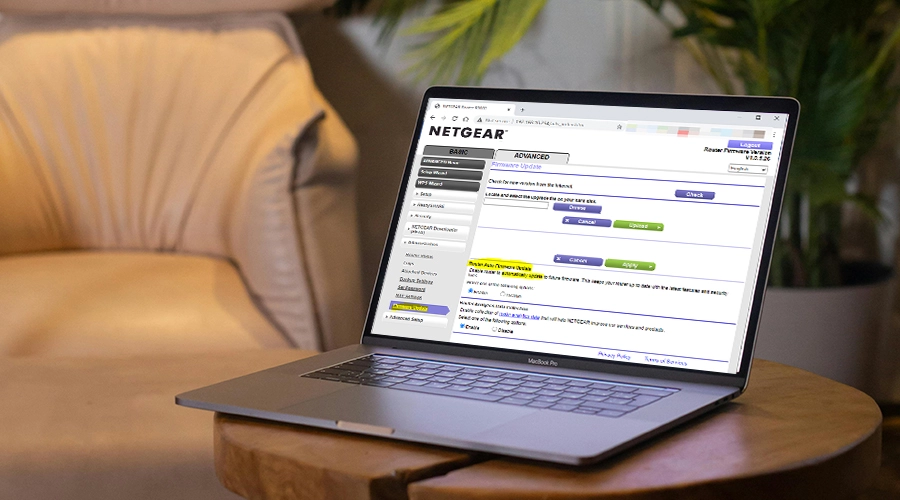Netgear Router Setup
A Netgear router must be configured and a secure network must be established via a number of processes. This is a standard setup tutorial for your Netgear router:
Note: Make sure you have a computer or other device with a web browser and an active internet link before you begin.
- Turn on your Netgear router after unveiling the box.
- To link your computer or other device to any LAN port on the router, use an Ethernet cable.
- Unveil a web browser on your linked device.
- In the browser bar, type your Netgear router’s IP address.
- Login as admin
- Password: passcode
- If none of this work, find the correct login information in the handbook that came with your router.
- Go to the WAN, or follow the setup tutorial.
- Select the proper link type (most residential users use DHCP).
- Consult your internet service provider (ISP) if you’re not sure.
- Go to the “Wireless Settings” or “Wireless” section.
- Establish your passcode (encryption key) and wireless network name (SSID).
- For optimal security, choose for WPA2-PSK (AES).
- It is advisable to modify the router login credentials for security purposes.
- To modify the admin passcode, locate the “Administration” or “Advanced” option.
- Look for firmware apprises within the router’s configuration.
- Update to the most recent firmware version, if it is available, for better performance and security.
- Restarting your router is a good idea after making adjustments so that the changes take effect.
- Relink your computer or device to the wireless network using the new SSID and passcode after the router has restarted.
Netgear router setup instructions
- After unpacking, turn on the Netgear router.
- Link it with an Ethernet link to the modem.
- Pass in the login information (passcode: passcode, userID: admin).
- Go to the “Internet” area and choose the link type, which is typically DHCP.
- Set the WPA2-PSK (AES) passcode and SSID in the “Wireless” options.
- In the “Administration” or “Advanced” section, update the admin passcode for security.
- Look for firmware upgrades, install them if they are available.
- To implement the modifications, restart the router.
- Using the revised login information, re-link devices to the new wireless network.

Netgear router setup without ethernet cable
There can be three different methods for Netgear setup and they are mention here;
- Once the LED lights on the Netgear router have stabilised, turn it on.
- Find the router’s Wi-Fi network (SSID), which is typically listed on the label of the router, and link to it on your device.
- Unveil a web browser and type 192.168.1.1, for example, into the bar to access the router’s IP address.
- Use the login information to log in.
- To configure your internet link type (often DHCP) under the “Internet” or “WAN Setup” section, follow the setup wizard’s instructions.
- Configure your network name (SSID) and secure passcode (WPA2-PSK suggested) under the “Wireless” options.
- In the “Administration” or “Advanced” section, update the admin passcode for security.
- In the router settings, look for firmware updates and install them if any are available.
- To implement the modifications, restart the router.
- Relink your device to the new wireless network using updated credentials.
netgear router setup with modem
- Link the Netgear router to the modem using an Ethernet cable.
- Power on the router and modem, ensuring both are fully initialized.
- Use another Ethernet cable to link your computer or device to any router LAN port.
- Unveil a web browser and enter the router’s IP address (e.g., 192.168.1.1).
- Log in using identifications.
- In the setup wizard, configure the internet link type (typically DHCP) under the “Internet” or “WAN Setup” section.
- In the “Wireless” settings, set your network name (SSID) and passcode (WPA2-PSK recommended).
- Change the admin passcode in the “Administration” or “Advanced” section for security.
- Check for firmware updates in router settings and apply if available.
- Restart the router.
- Relink devices to the new wireless network using updated credentials.
netgear router setup issues
- Link Issues
- Power cycling
- Firmware Update
- Configuration
- IP Address Conflict
- Power cycling
- Link Issues
- Configuration
- Firmware Update
- IP Address Conflict
netgear router setup no internet
- Power on the Netgear router and link it to the modem using an Ethernet cable.
- Confirm the modem is linked to the internet and turned on.
- Link your device to the router via Ethernet or Wi-Fi.
- Unveil a web browser and enter the router’s IP address (e.g., 192.168.1.1) in the search field.
- Log in using identifications.
- Circumnavigate to the “Internet” or “WAN Setup” section and ensure the link type is configured correctly (typically DHCP).
- Check all cable links and restart the modem and router.
- Update router firmware if available in the settings.
- Verify DNS settings and troubleshoot network configurations.
netgear router setup without app
- Turn on the Netgear router and use an Ethernet wire to link it to the modem.
- Link your device or computer to the router via Ethernet, or use the router’s network (SSID).
- Enter your login credentials to log in.
- Circumnavigate to the “Internet” or “WAN Setup” section of the router settings to adjust the internet link type, which is typically DHCP.
- In the “Administration” or “Advanced” section, update the admin passcode for security.
- Look for firmware upgrades, install them if they are available.
- To implement the modifications, restart the router.
- Utilising the revised wireless credentials, relink your devices.

netgear router setup ip
- Using an Ethernet wire, link the Netgear router to the modem after turning it on.
- You may either use Ethernet to link your computer or device to the router or you can use the router’s Wi-Fi network (SSID).
- In the search field of an unveil web browser, type the router’s IP address.
- Pass in your login evidence by default.
- In the “Internet” or “WAN Setup” section of the router settings, circumnavigate to configure the type of internet link.
- In the “Wireless” section, adjust your wireless network’s configuration, including the passcode and SSID.
- For added security, modify the admin passcode in the “Administration” or “Advanced” area.
- Look for obtainable firmware elevations and connect them.
- To make adjustments, restart the router. Use the new wireless credentials to relink your devices.
how to troubleshoot netgear router
- Make sure that all of the cables—power, Ethernet, and DSL/cable link—are firmly attached.
- Make sure the power LED is lit and that the router is receiving power.
- Verify that your modem is operating properly.
- The IP address of the router, which is often 192.168.1.1 or 192.168.0.1, should be typed into the search field of an unveil web browser.
- The right IP address can be found in the handbook for your router.
- Input your Netgear router’s userID and passcode.
- Usually, “admin” is the passcode and userID, but for precise details, refer to the handbook that came with your router.
- If so, download and install it because there are a number of problems with outdated firmware.
- Typically, to accomplish this, hold down the router’s reset button for ten seconds.
- To find out if any security software is the problem, briefly disable it.
- Security software may occasionally prevent the router setup process.
- Check the settings on your modem and internet service provider if you’re experiencing problems linking to the internet.
- If required, confirm that your modem is in bridge mode.
- Try utilising a diverse web browser.
- Problems with the browser can occasionally cause disruptions to the setting procedure.
- Make sure your computer is configured to automatically detect IP addresses.
- Make sure your static IP address is set up properly if you have one.
netgear router setup as bridge
- Link to the Netgear router’s web interface using its IP address (e.g., 192.168.1.1) through a web browser.
- Log in using the identifications.
- Choose “Advanced Setup” or “Advanced Settings,” then select “Router/ AP / Bridge / Repeating Mode.”
- Select the “Bridge” mode option.
- Disable the router’s DHCP server.
- Enter the MAC address of the primary router (upstream router) in the appropriate field.
- Save the settings and restart the router.
- Link devices to the primary router’s network, and the Netgear router will act as a bridge.
netgear router setup with spectrum modem
- Activate the Spectrum modem and Netgear router separately.
- Link your PC to the router by Ethernet, or use the router’s Wi-Fi network (SSID).
- Pass in your login evidence (passcode: passcode, userID: admin).
- Choose DHCP as the link type when you circumnavigate to the “Internet” or “WAN Setup” panel.
- Check that Spectrum’s IP and DNS details are automatically obtained by the router.
- In the “Wireless” area, change the passcode and SSID for your wireless network.
- For added security, modify the admin passcode in the “Administration” or “Advanced” area.
- To make adjustments, restart the router.
netgear router default password
- Unveil a web browser and type 192.168.1.1, for example, into the search field to access the router’s IP address.
- When prompted to log in, pass in the information.
- For further security, after you’re logged in, think about changing the passcode.
- To prevent unwanted access to your router and network, create a strong, one-of-a-kind passcode.
- For future access, save your changes and log in again using your changed login information.
netgear router update firmware
- Link the devices and unveil the browser
- Circumnavigate to the “Administration” or “Advanced” section.
- Check for firmware updates. If available, download the latest firmware version from the Netgear support website.
- Upload the file in the router’s firmware update section.
- initiate the update process.
- Once finished, the router will restart, and your firmware will be up to date, enhancing security and performance.

how to reset netgear router
- Trace the reset knob on the router.
- It’s often a small sunken button.
- Allow the router to start up again.
- Log in using the right authorizations
- Your Netgear router is now reset to factory s.
how to reset netgear router passcode
There can be three different methods for Netgear setup and they are mention here;
- Type 192.168.1.1 into the search field to access the router’s IP address.
- Use the current admin login information to login
- Go to the “Advanced” or “Administration” area.
- Find the router passcode change option.
- After entering the existing passcode, make a new, strong passcode.
- After making changes, log out.
- Relink to the network by entering the new passcode.
- Reconfigure the router and do a factory reset if you lose the passcode.